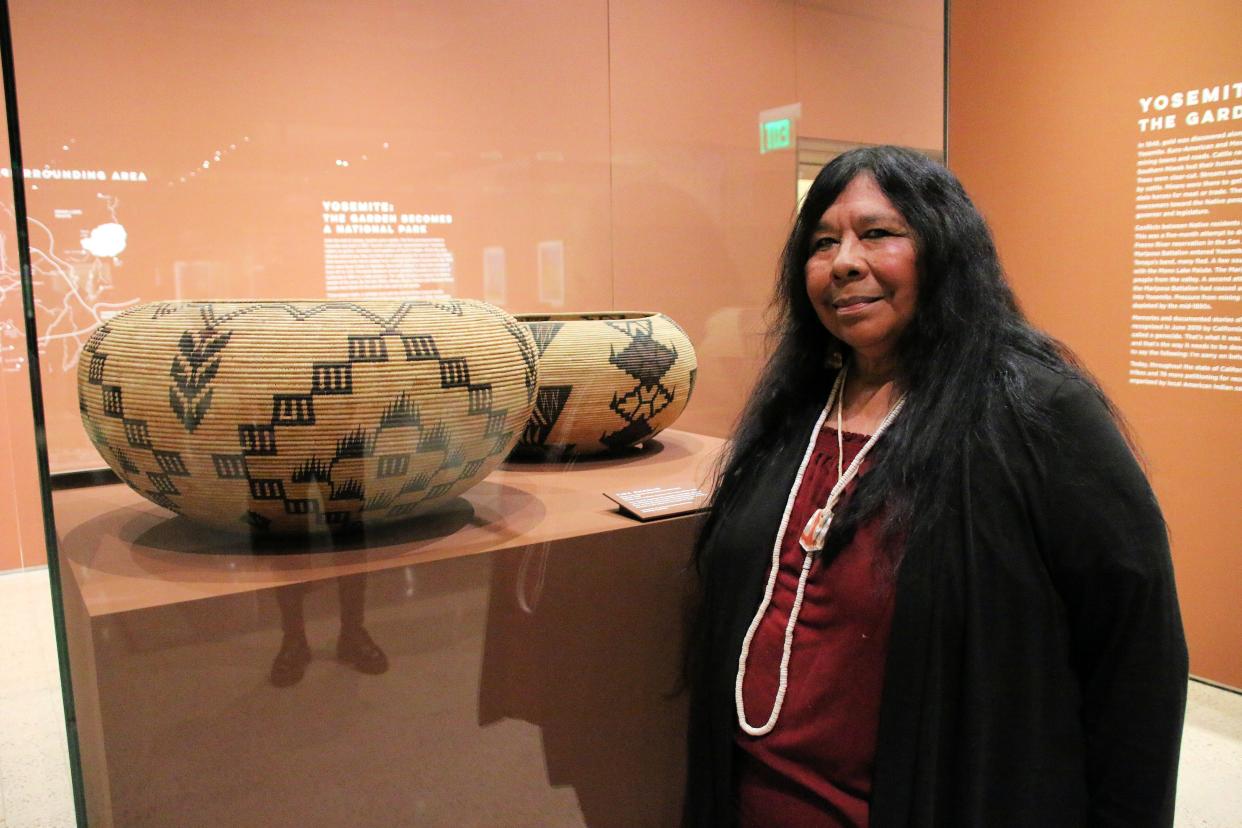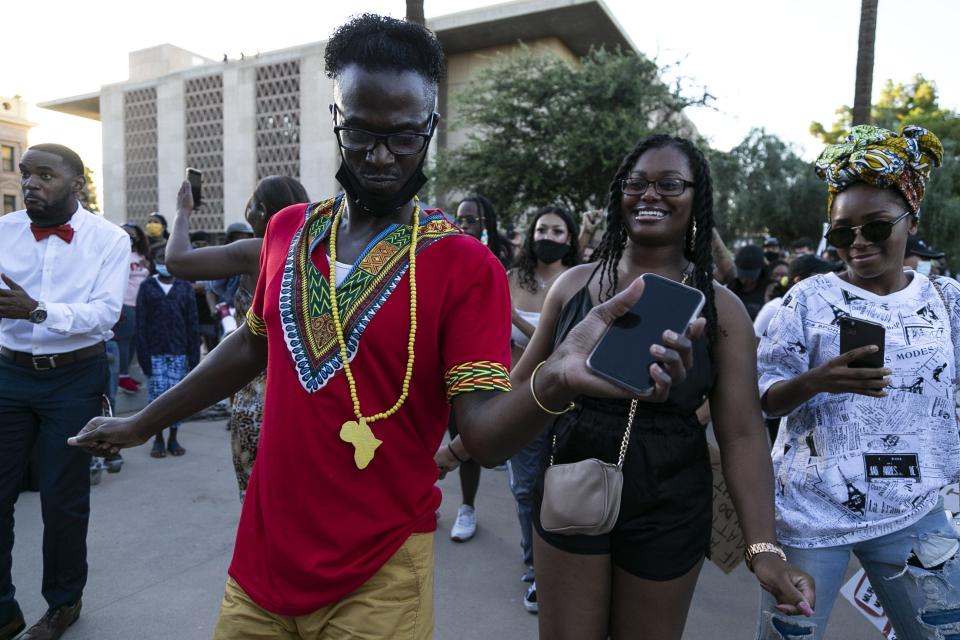From the Roman Empire to the drying West, book takes a long view on climate adaptation

It's true. The climate is always changing. But this refrain from the climate denial camp — as if to argue that the existence of natural cycles of atmospheric variability somehow means that humans can't also be having an influence — is not the whole story.
Perhaps no one has explained the full story in more detail than Brian Fagan and Nadia Durrani, both archaeologists and renowned writers, in their latest co-authored book, "Climate Chaos: Lessons on survival from our ancestors."
Across 15 chapters spanning 30,000 years, Fagan and Durrani lay out the facts on the history of human civilizations and the climate, how it has always changed us and how we are now changing it.
The book is chock full of droughts, floods, famines, freezes, a 700-year "warm snap" and plagues that, while they didn't often rise to the level of global pandemics before automobiles and airplanes sped disease transmission, likely would today. From prehistoric cavemen to Egypt's pharaohs to the fall of the Roman and Mayan Empires through Europe's brutal Little Ice Age to today, it's also full of collapsed civilizations, vanished ways of life and leaders who were ousted after claiming mastery over nature, but failing to deliver.
Lessons from the pandemic:The pandemic showed us how interconnected we are. Will our climate response reflect that?
The lessons from our ancestors that Fagan and Durrani want us to see embedded in all of this are that, while humans have occasionally exhibited remarkable capacities for planning ahead, working together and adjusting to changing climates throughout history, our species has also fallen victim to nature's whims many times before. Combine that with the fact that we are now contributing to unprecedented climate change through the burning of fossil fuels, while being more rigid in our geographic and political mobility and cooperative adaptation, and it won't take an archaeologist to draft the next chapter in our story.
Botanical spines and historical declines
At the second-ever meeting of the "Read Between the Spines" book club hosted by Phoenix's Desert Botanical Garden earlier this month, Brian Fagan sat down with a room of spellbound listeners and recast key lessons from his research.
Before his appearance, Margie Burke, the garden's CFO, expressed excitement about insights the book offered and what more an in-person conversation with the author might hold.
"That's the thing that intrigued me about this book, how other civilizations responded to changing climates," Burke said. "And I liked the use of 'chaos' in the title to describe our situation. It works."
One man, speed-reading his new, hardcover copy while he waited for the event to start, cited drought and the worsening situation on the Colorado River as his reasons for attending.
"With all the recent news about the water situation in Scottsdale and about how the Colorado has reached levels that are triggering certain actions, I was interested in learning more about what what we should do," he said.
Lessons from National Parks:New book on climate change in national parks pleads for action to save our best idea
Pamela Wood, a Tempe-based artist, was pleasantly surprised by the selected book, the first one she's read that's primarily about the climate.
"When I got the book and committed, I realized how important this topic was," Wood said. "It's really a history of the world through climate. It's a delicate issue in some senses that, as a member of the human tribe, it sometimes feels like there's so little we can do with such a massive and overwhelming topic. I'm here because I wanted to hear more, and make it personal."
Getting through the 352-page book (or 12.5 hours as an audiobook) does require a commitment. Much of it reads like a high school history text: long lists of "BCE" or "CE" dates with unflowery descriptions of events that followed.
But it's a topic worth the time investment and is not absent storytelling.

Seeing the stratosphere in a Stradivarius
Scientists, the authors explain, are able to reconstruct past climates using evidence from tree rings — including, remarkably, those preserved in the wood of historic Stradivarius violins — as well as from glacier ice cores, lake sediment layers, pollen samples and cave rock formations. By connecting those records to what archaeologists and historians tell us was going on with human civilizations at the time, "Climate Chaos" chronicles a scintillating synchronization between the success of our species and the status of the stratosphere.
"It's really a very dynamic process, climate change and culture change," Fagan told those gathered at the garden. "What we've learned about climate change from all of this is that it's extremely variable."
Lessons from tree rings:Researchers find musical muse in forest climate data
That variability became a problem for Egypt's pharaohs, who claimed to be gods who controlled the weather and flooding cycles of the River Nile upon which the region's agriculture depended. When the crops dried up, Fagan said, the people revolted.
"For three centuries, Egypt was a fractured civilization," the book reads. "The pharaohs had fostered the belief that they controlled the mysterious inundation that arrived from far upstream. In fact, the Egyptian state in all its arrogant magnificence depended on the vagaries of Indian Ocean monsoons and atmospheric changes in the distant southwestern Pacific."
The changing climate, often controlled by El Niño cycles, also became a problem for Central Africans forced to haul water by hand to their scorching-hot fields in Gwembe Valley in Zambia after the rains stopped. It was an obstacle for those living near Lake Titicaca in Bolivia as part of a "flourishing civilization until the climate dried up and it was gone," Fagan said. And it's been something that those who settled in one of the driest places on the planet in Peru have tried to manage through the construction of sophisticated water infrastructure and reservoirs.
The book also touches on the struggles of serfs, peasant agricultural laborers in Europe's Middle Ages, who starved to death when unexpected floods doomed the crop yields they owed their feudal lords. It references how the unusually cold period between 1816 and 1820, nicknamed "1800 and froze to death," inspired the writing of "Frankenstein." And it casts the climate as a suspect in the mysterious fall of the Roman Empire after volcanic activity caused a cooling phase. Every degree decrease in average temperature shortens the growing cycle by three weeks, the book states.

The lush, favorable climate at the outset of the Roman Empire may even have been "the enabling background of the Roman miracle," a source in the book says. And when it shifted beyond human control, the Empire fell.
Our current problematic overestimation of Colorado River flows, divided up between western states during an unusually wet year, is also evidence of how climate ebbs and flows can inspire humans to develop civilizations that aren't fully sustainable over longer periods of time, especially as we speed up climate change with our own actions.
"The important point isn't whether we are going to hit 1.5 degrees Celsius of warming (average, over pre-Industrial times)," Fagan told listeners at the garden. (The latest report from the Intergovernmental Panel on Climate Change doesn't deem this a certainty, but has concluded that options to avoid it are rapidly narrowing.) "We are. The important point is about the social and cultural consequences."
Lessons from home:'Unruly Planet' explores the human meaning of 'home' and what it will take to defend ours
'Memories are short'
Despite all this knowledge, modern humans continue to live unsustainably. And we're not taking advantage of many of the strategies past humans used to adapt to changing regional conditions, Fagan said.
Mobility is a major way that humans in the past have dealt with their settlements drying up, flooding beyond repair or simply getting too hot or cold to comfortably survive. Nomadic civilizations moved on from unlivable places. But now political borders and armed guards limit the directions humans can shift to adapt. Climate migration, our modern term for the long-standing human practice of leaving an area behind when it is no longer suitable for residence, is now considered a global nuisance, the book concludes, with "climate refugees" being shuffled around like unwanted objects between hosting countries in more climate-fortunate locales.
As people relocate to new areas, many also fail to learn from the ancestral knowledge native to those places.
"It's striking just how little knowledge Europeans acquired about local landscapes and foods or about hunting and fishing strategies from their Native American neighbors," the book reads. "How much less they would have suffered had they looked and borrowed techniques to make adequate cold weather gear, waterproof fishing garments and footwear to combat frostbite developed by the local populations over thousands of years of engagement with the land and its climate."
Lessons from tribes:Tribes take a central role in water management as drought and climate change effects worsen
Peoples' memories for the climate and its lessons are short, Fagan and Durrani's book concludes.
"Those who claim that climate cycles always happened have harped on the 21st Century warming as natural," the book reads. "But based on scholarly study of the past in the American southwest, the 2000 to 2018 soil drying, enhanced evaporation and early snowpack loss and the area affected by aridity superimposed on climatic forcing, all amplified by human decisions and activities, have turned what would have been a routine dry spell into a megadrought. And the drying may have hardly begun."
At the conclusion of the book event in Phoenix, the man who had been speed-reading his hardcopy of "Climate Chaos" at the start asked Fagan what he personally is doing to prepare for continued drying throughout the West.
Fagan responded that he has been focusing on water conservation lately at his home in Santa Barbara. He has ripped out his turf lawn and upgraded to more efficient appliances. These are simple things that we know will help, he said, but that people have been slow to act on.
"The fascinating thing about this is it's partly a technology problem, but it's mostly a behavior problem," Fagan said. "And changing human behavior is one of the hardest things to do."
Lessons from our climate series:The latest from Joan Meiners at azcentral, a column on climate change that publishes weekly
One solution, he says, is "Education, with a capital "E"."
Chatting among the cactuses in the cool night air after the event, Fagan shared his fears for the future, that he expects things might get worse before they get better, that people will have to confront more pandemics, more food shortages, more deadly storms, more migration and unrest before our global society is motivated to enact the needed change. After all, his book illustrates how this whole sequence has played out in response to a changing climate many times before.
But he also offered hope.
"Am I optimistic? Yes," he said. "Why? Because we're human beings. We think and we plan ahead. This is not entirely political. One of the best things we can do is give people an understanding of climate and cultures."
Joan Meiners is the Climate News and Storytelling Reporter at The Arizona Republic and azcentral. Before becoming a journalist, she completed a doctorate in Ecology. Follow Joan on Twitter at @beecycles or email her at joan.meiners@arizonarepublic.com.
Support climate coverage and local journalism by subscribing to azcentral.com at this link.
This article originally appeared on Arizona Republic: 'Climate Chaos' examines change, adaptation over human history

